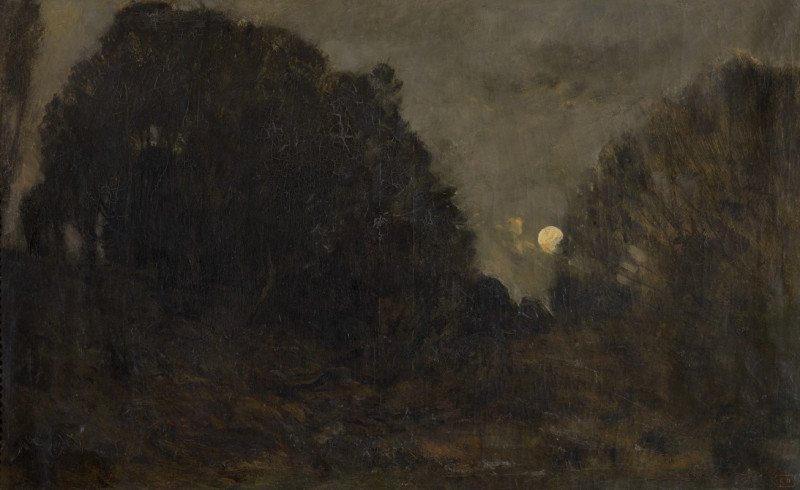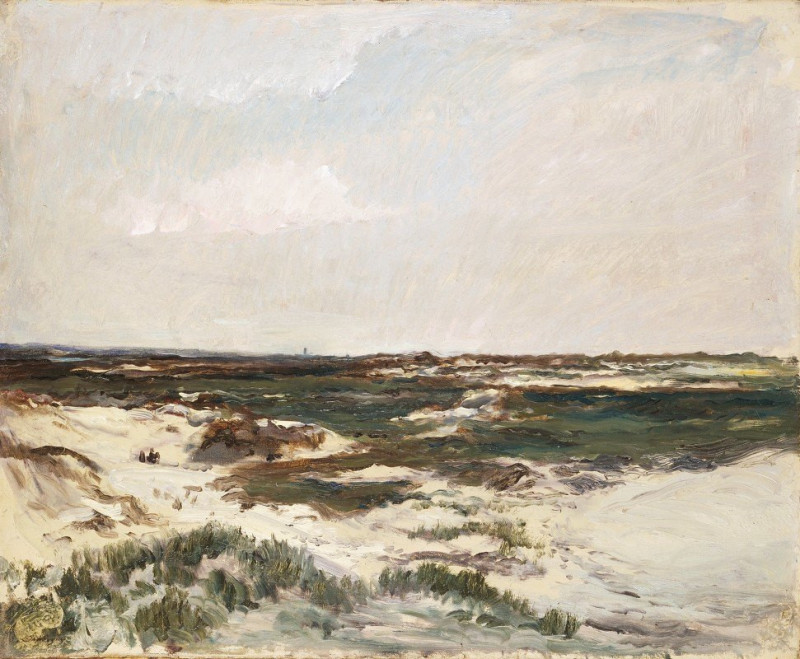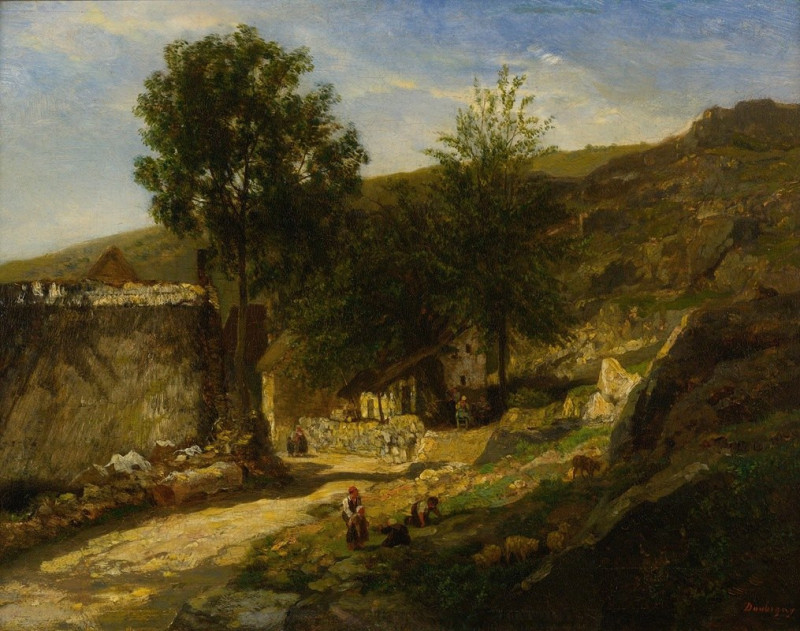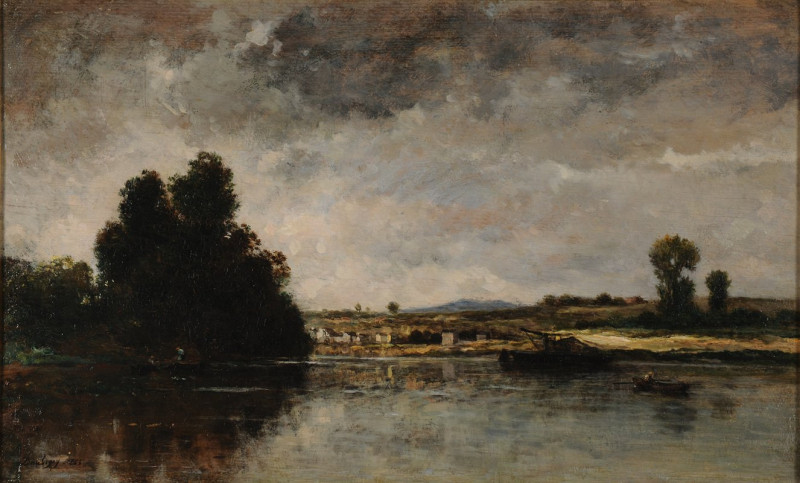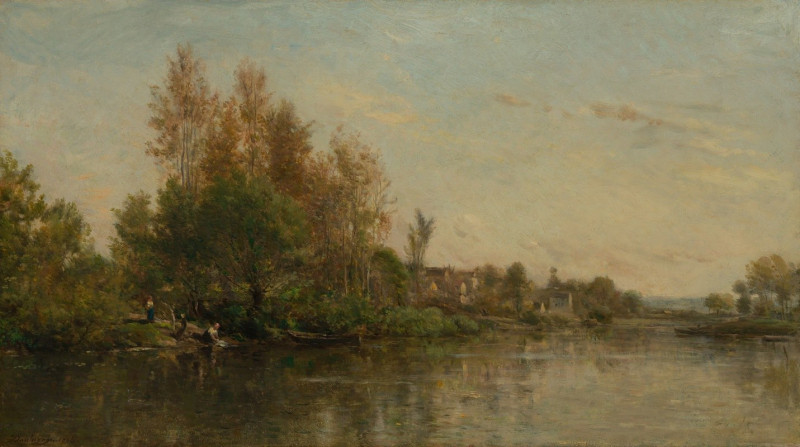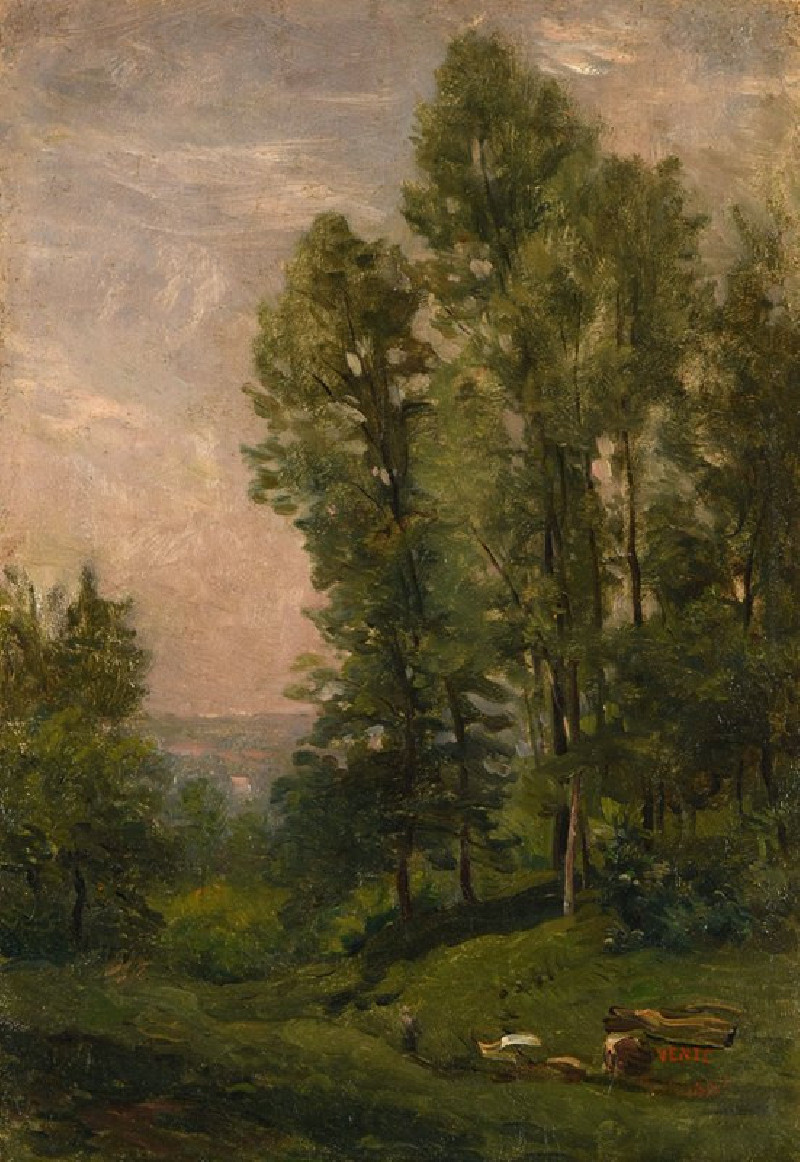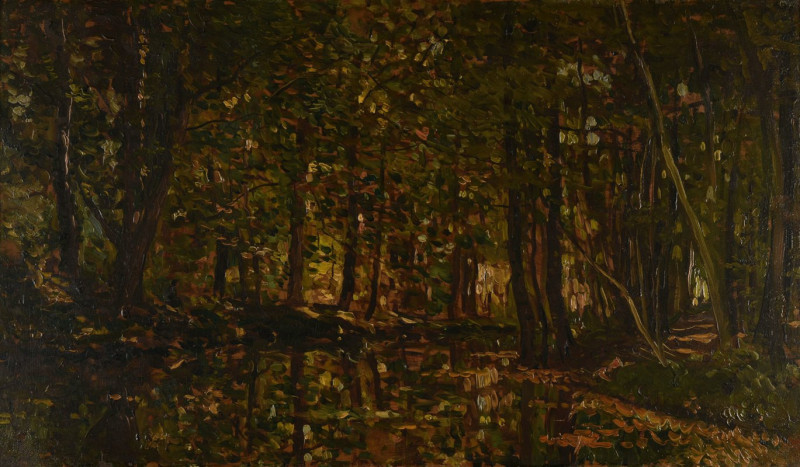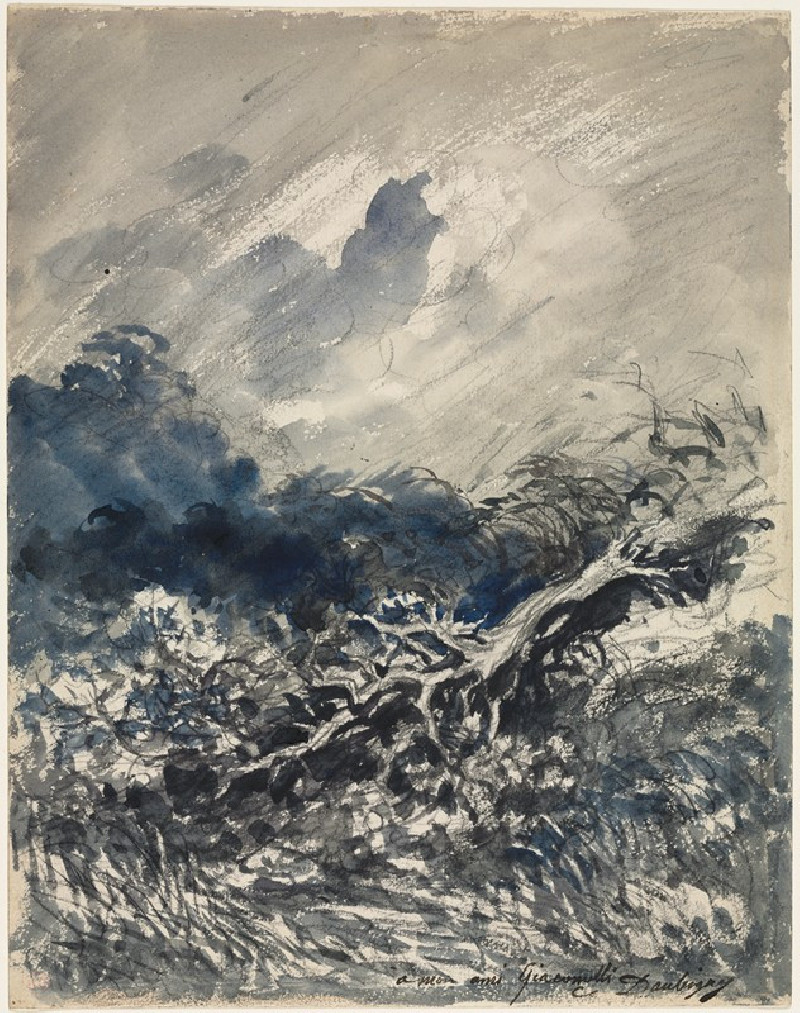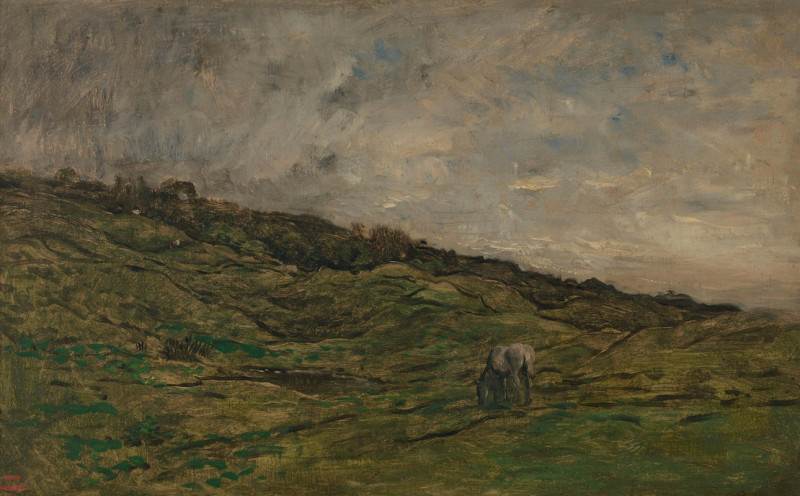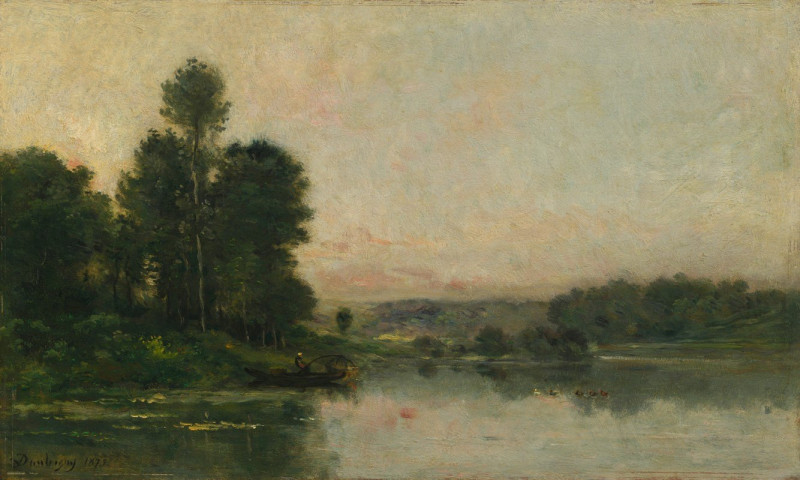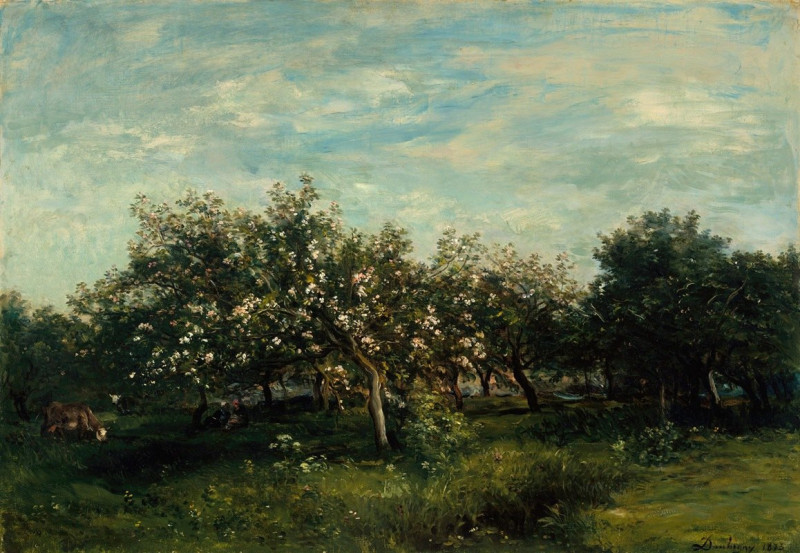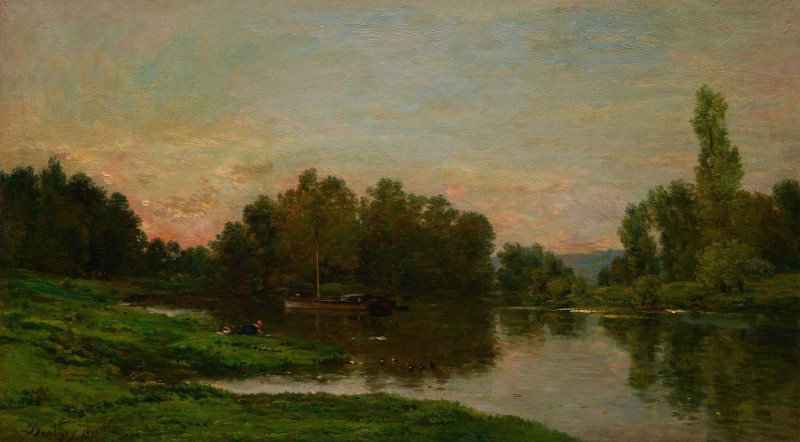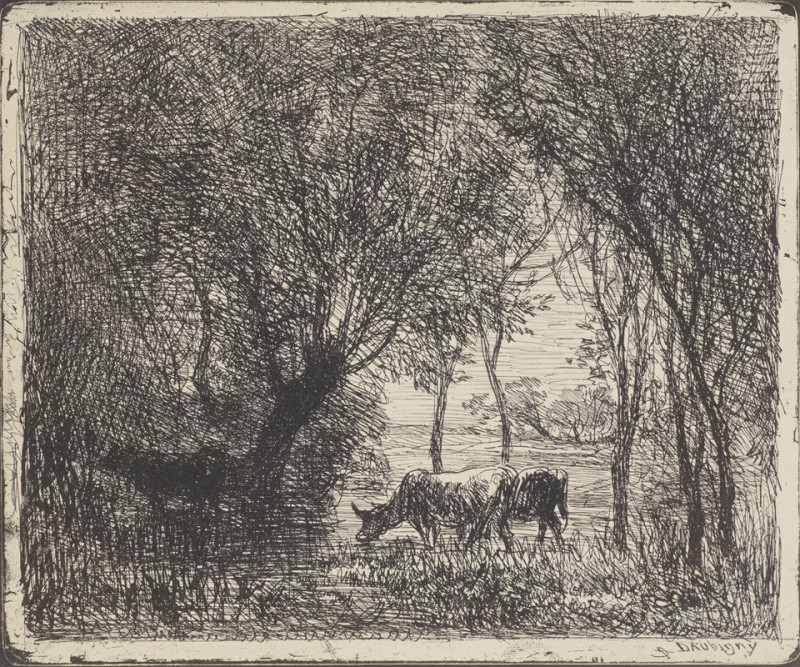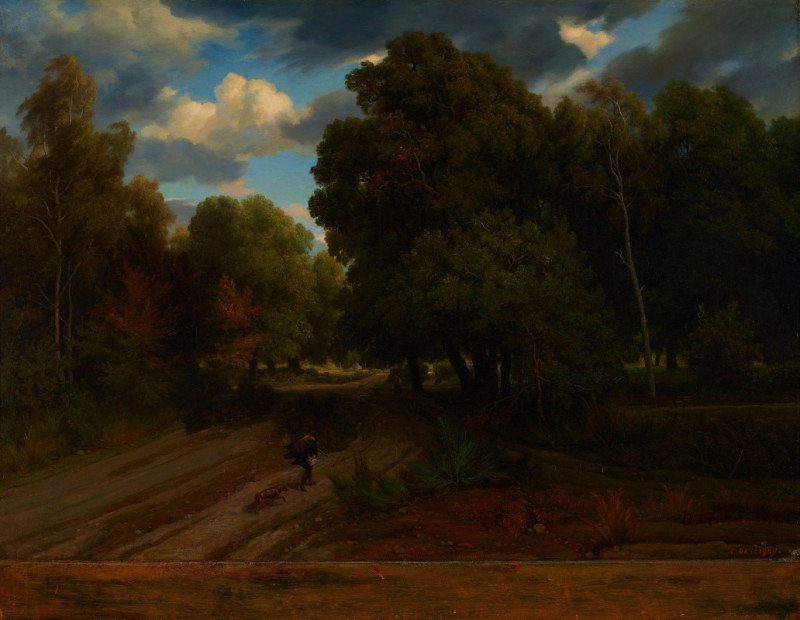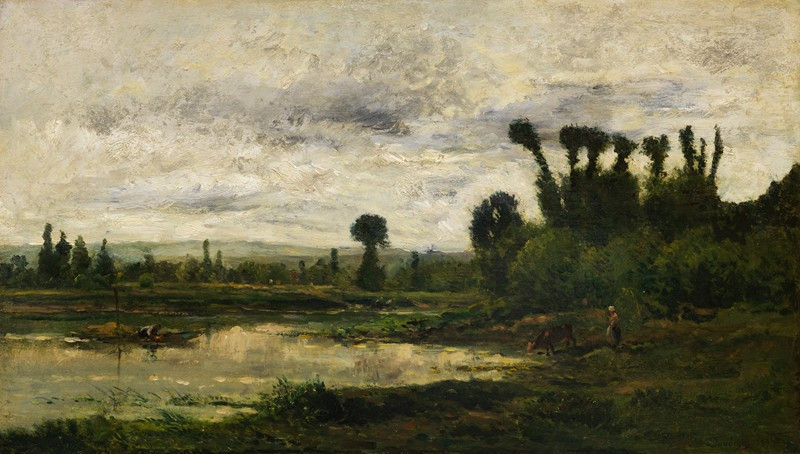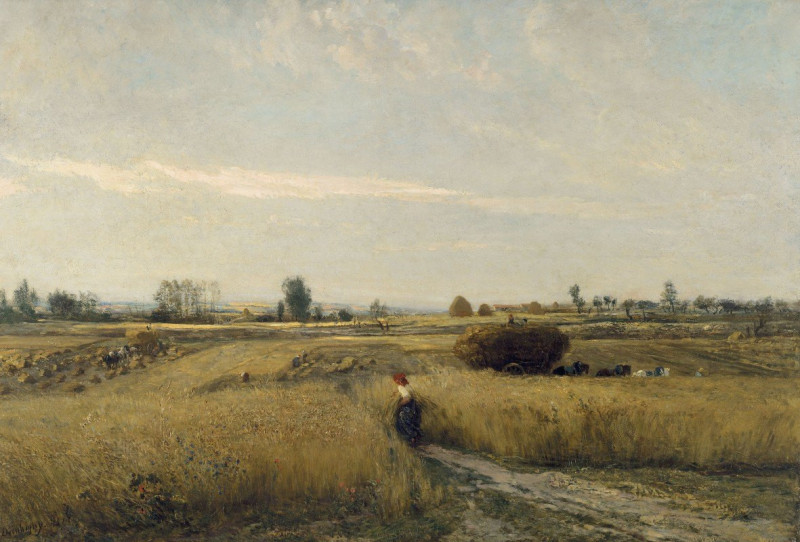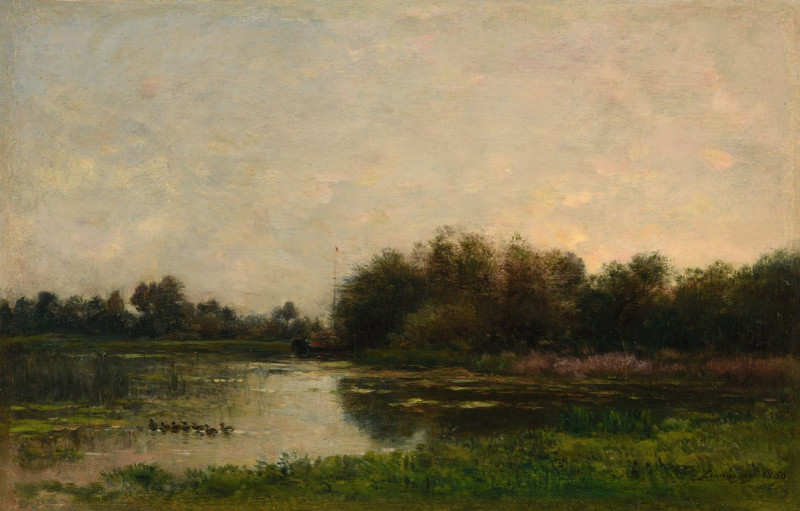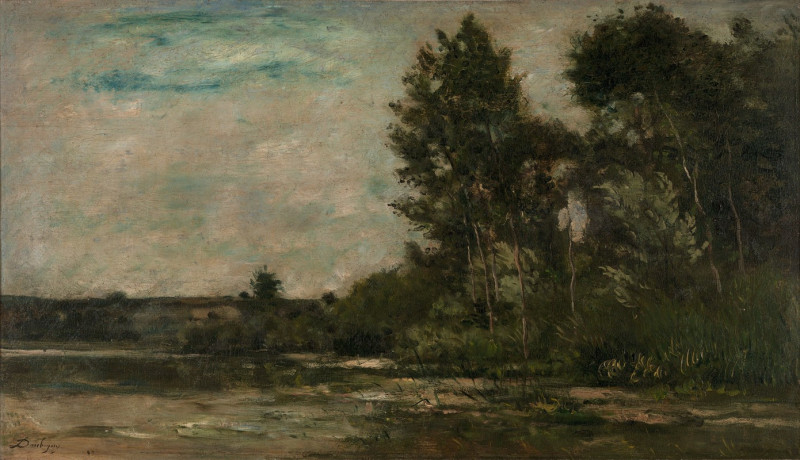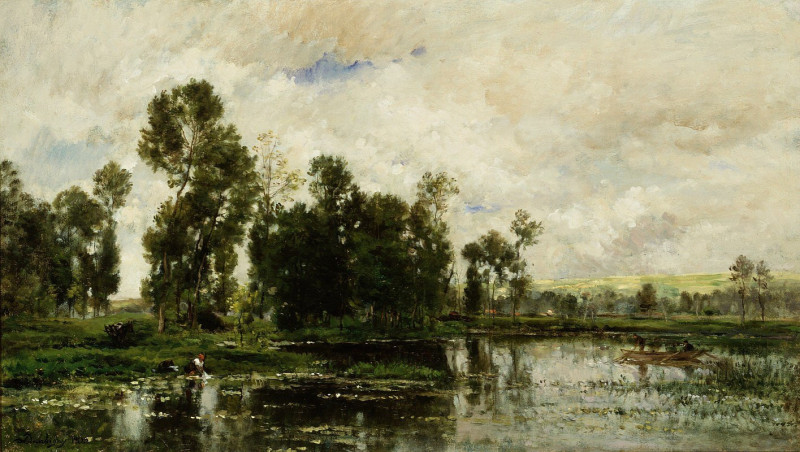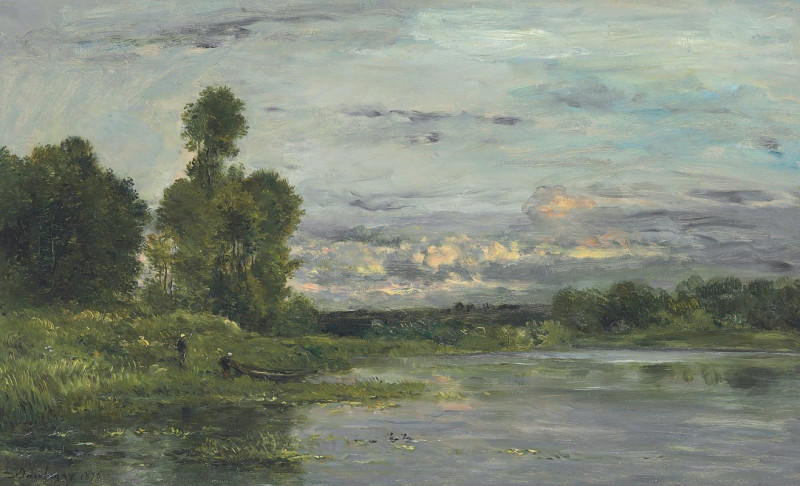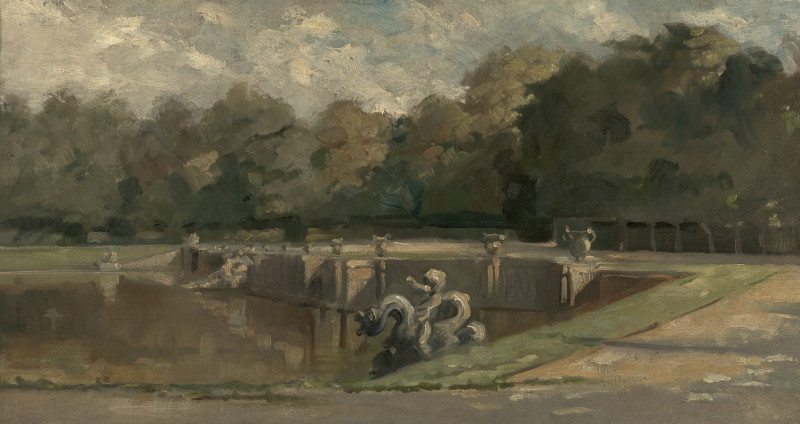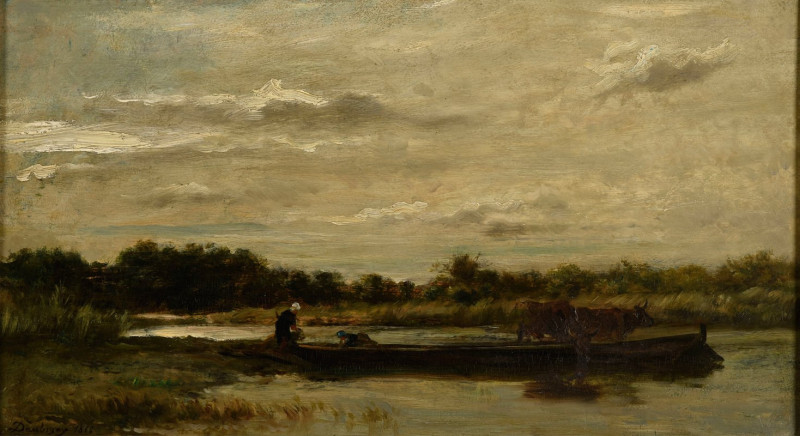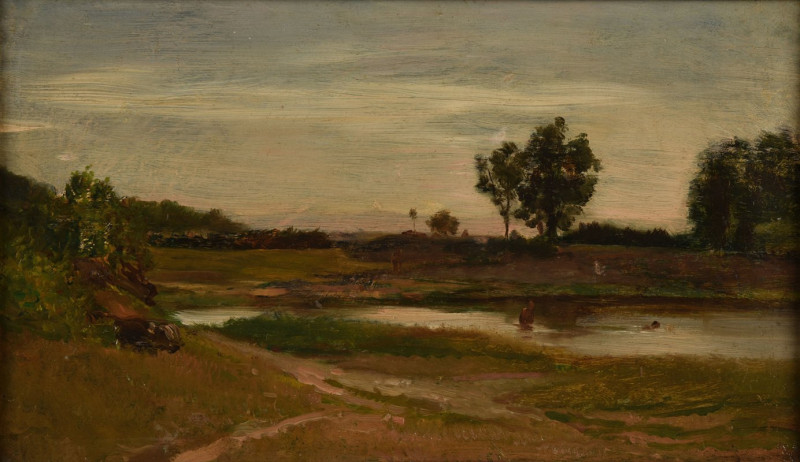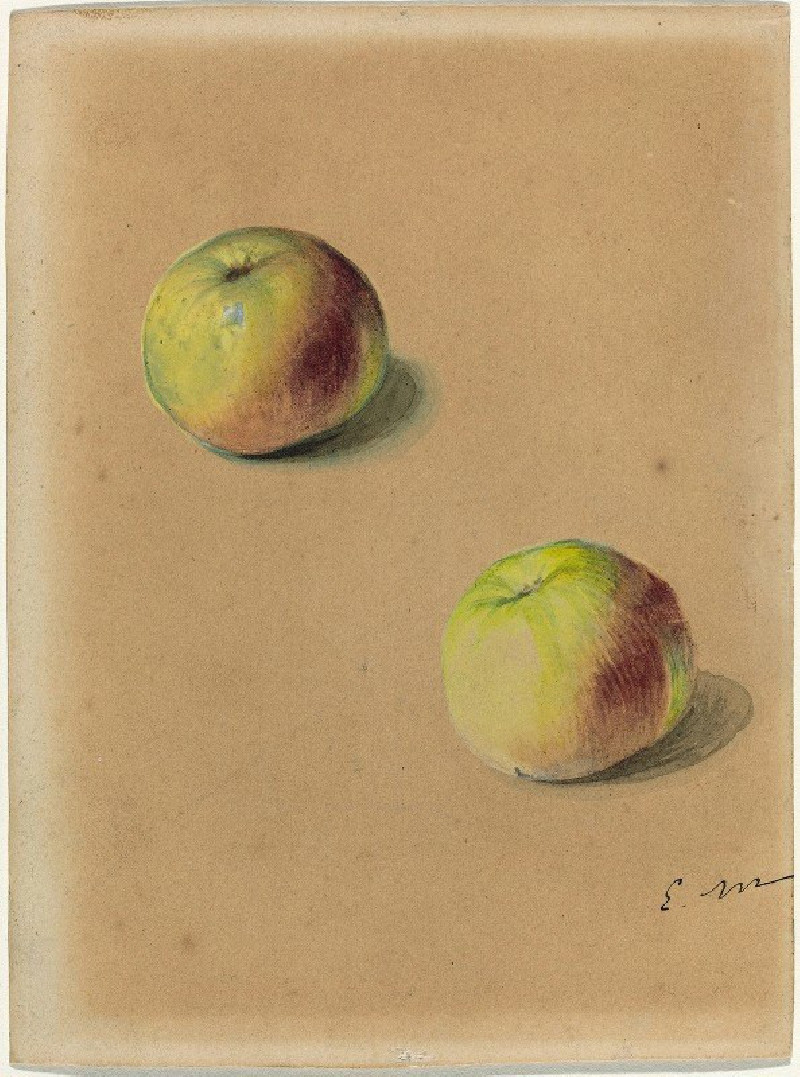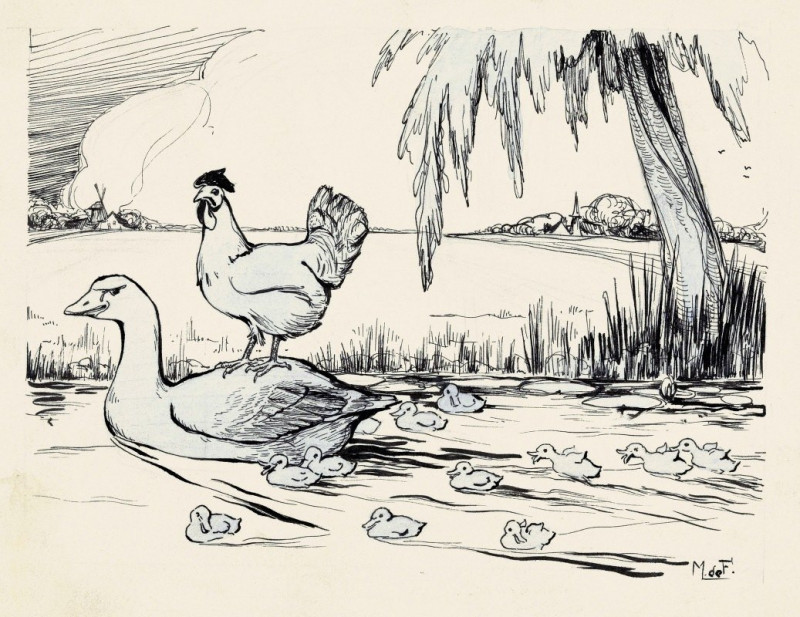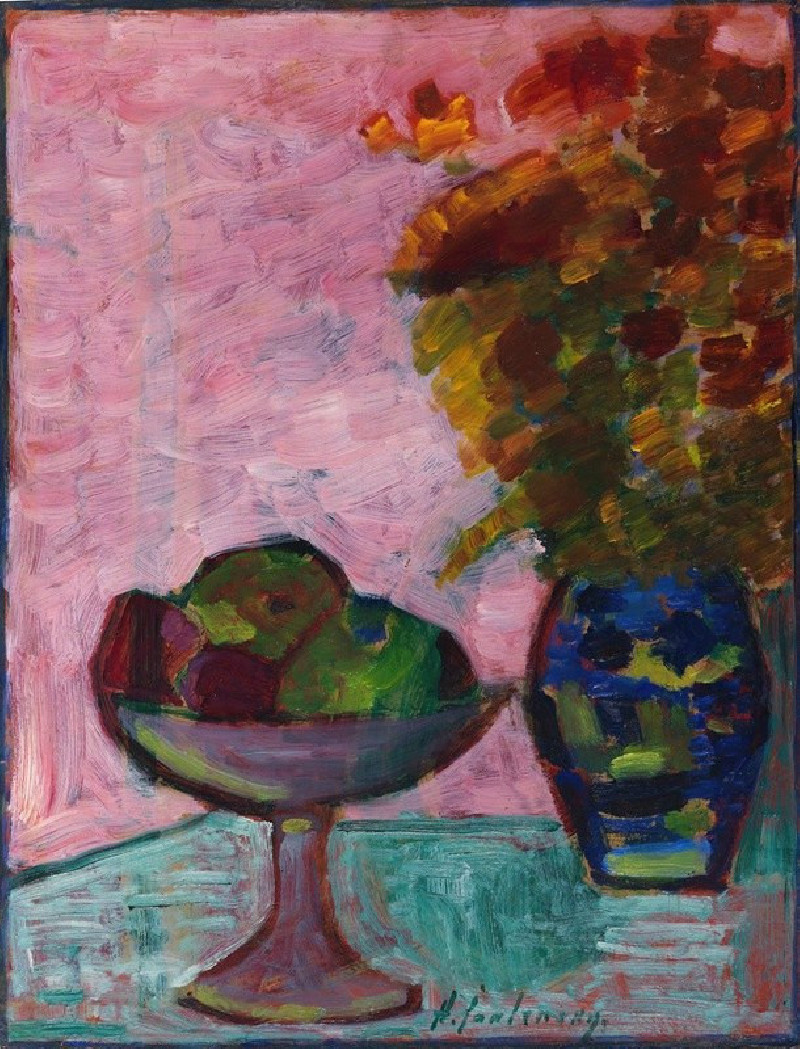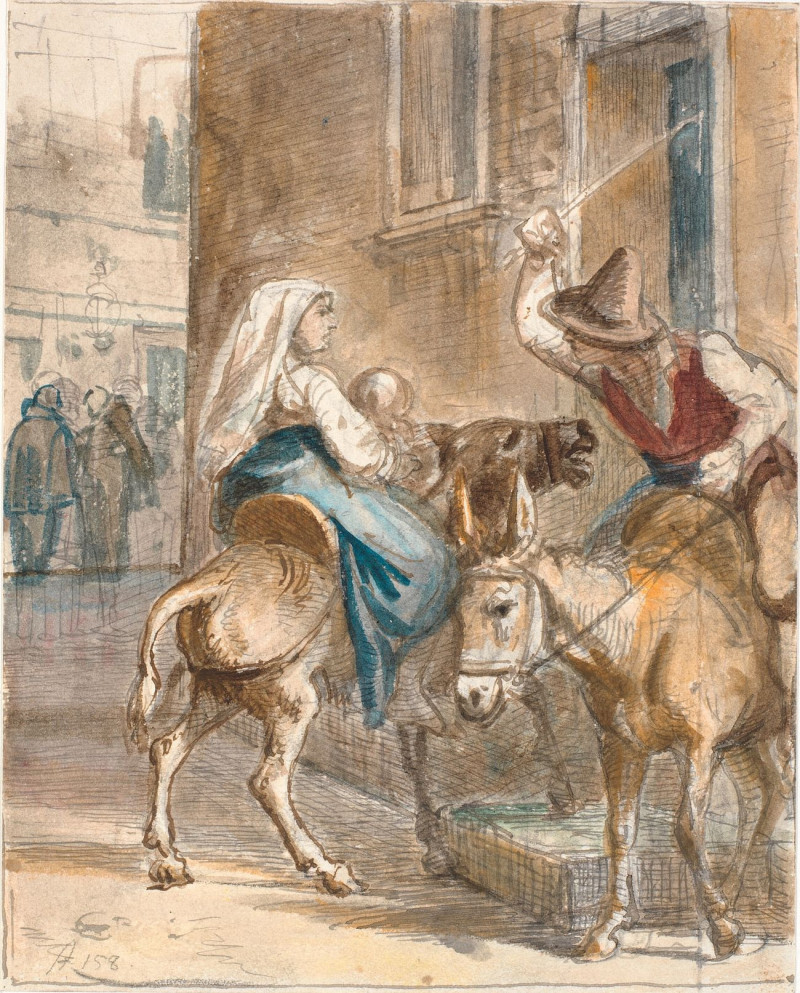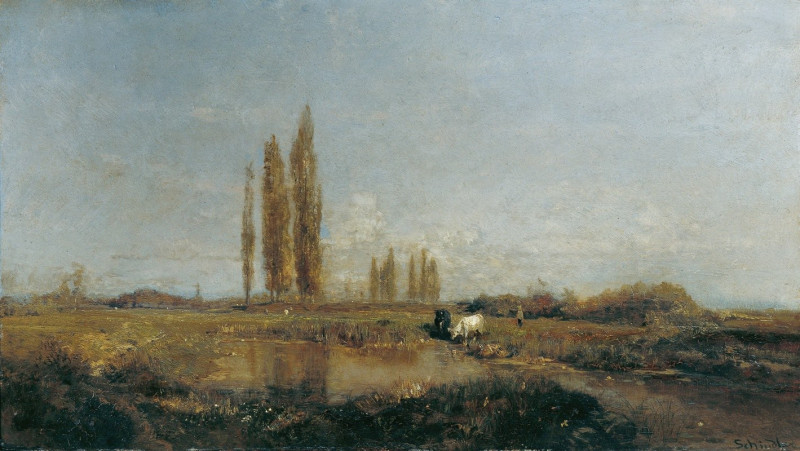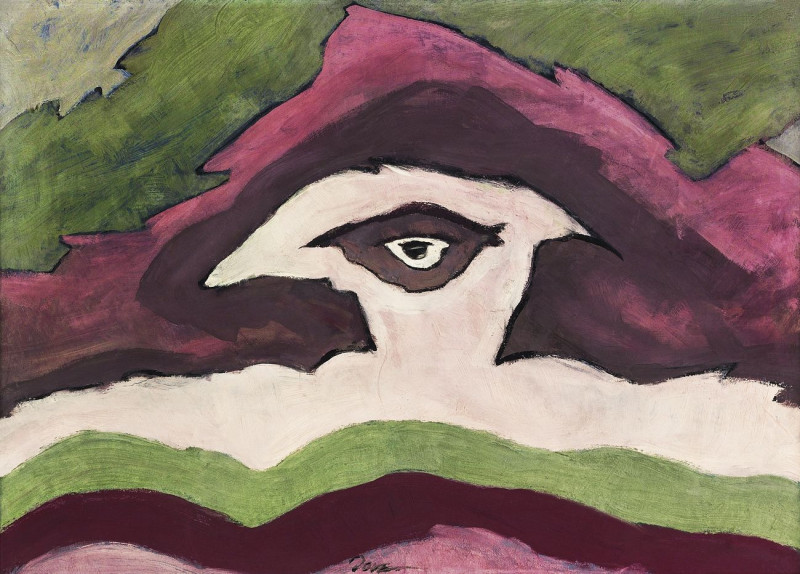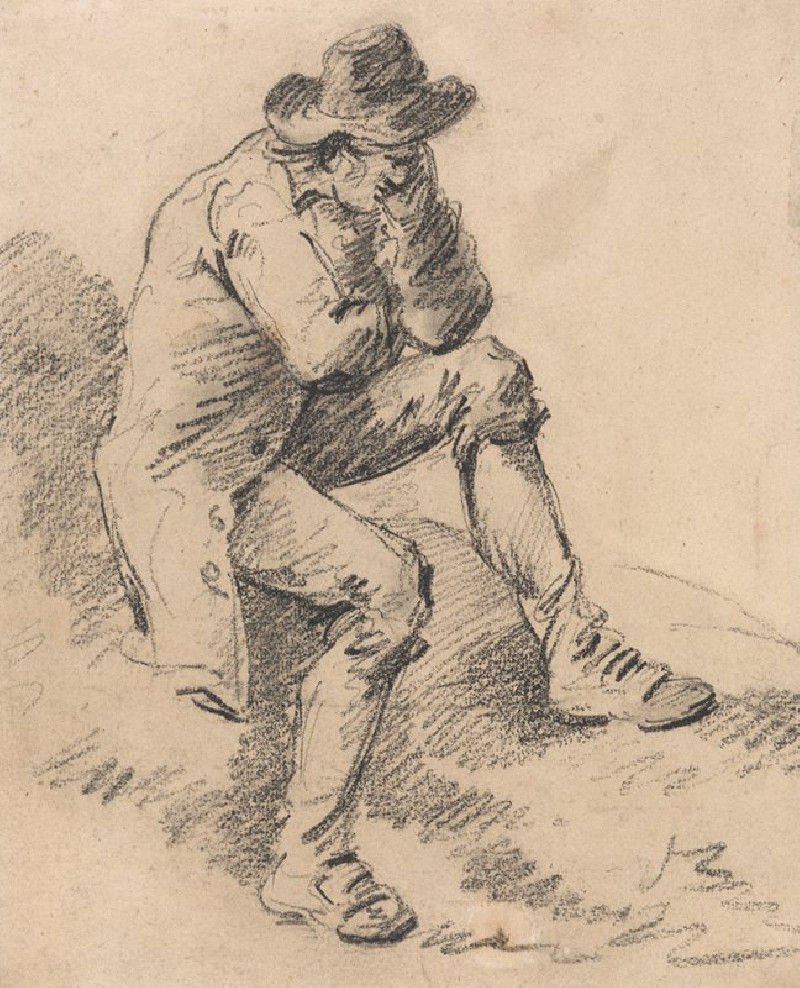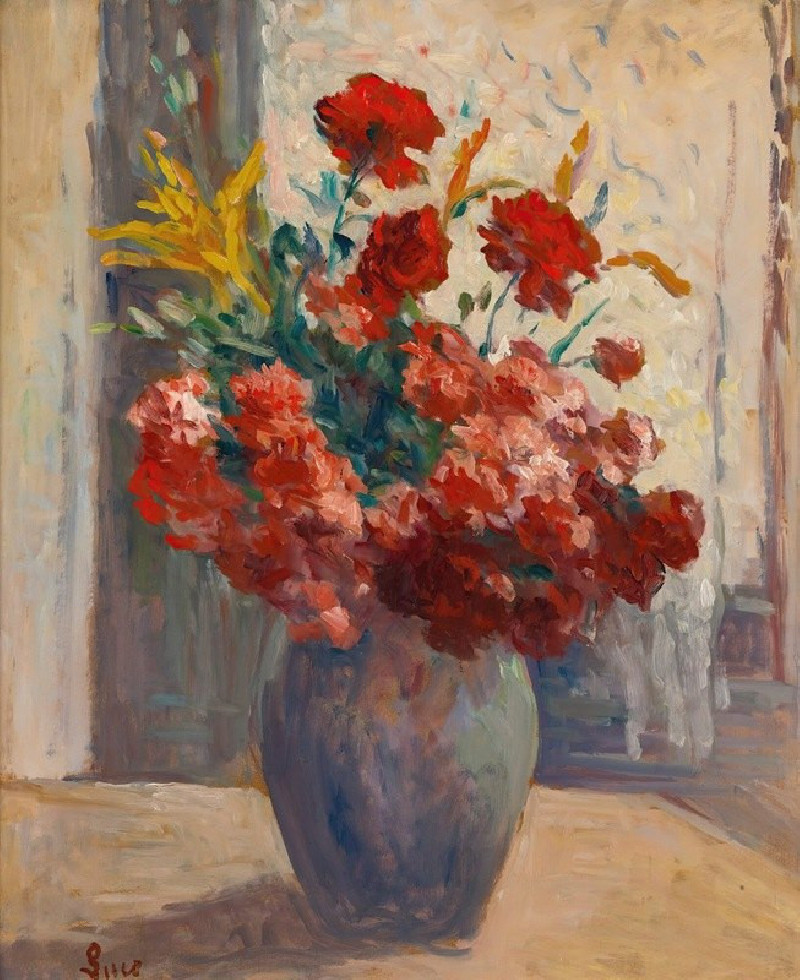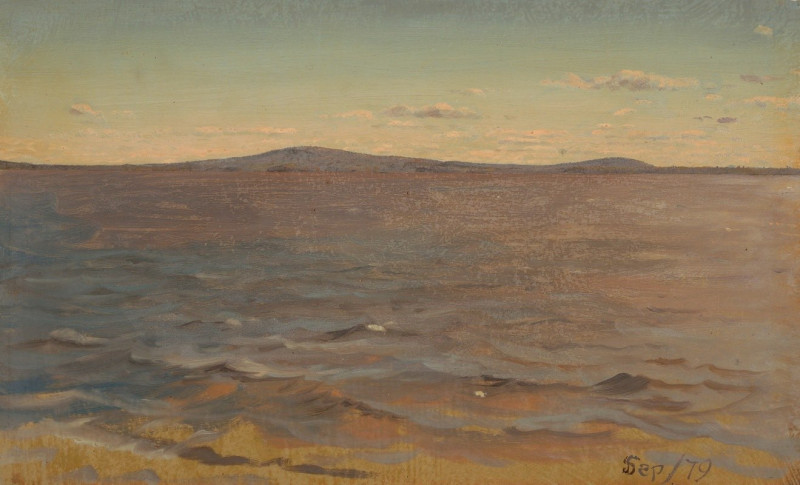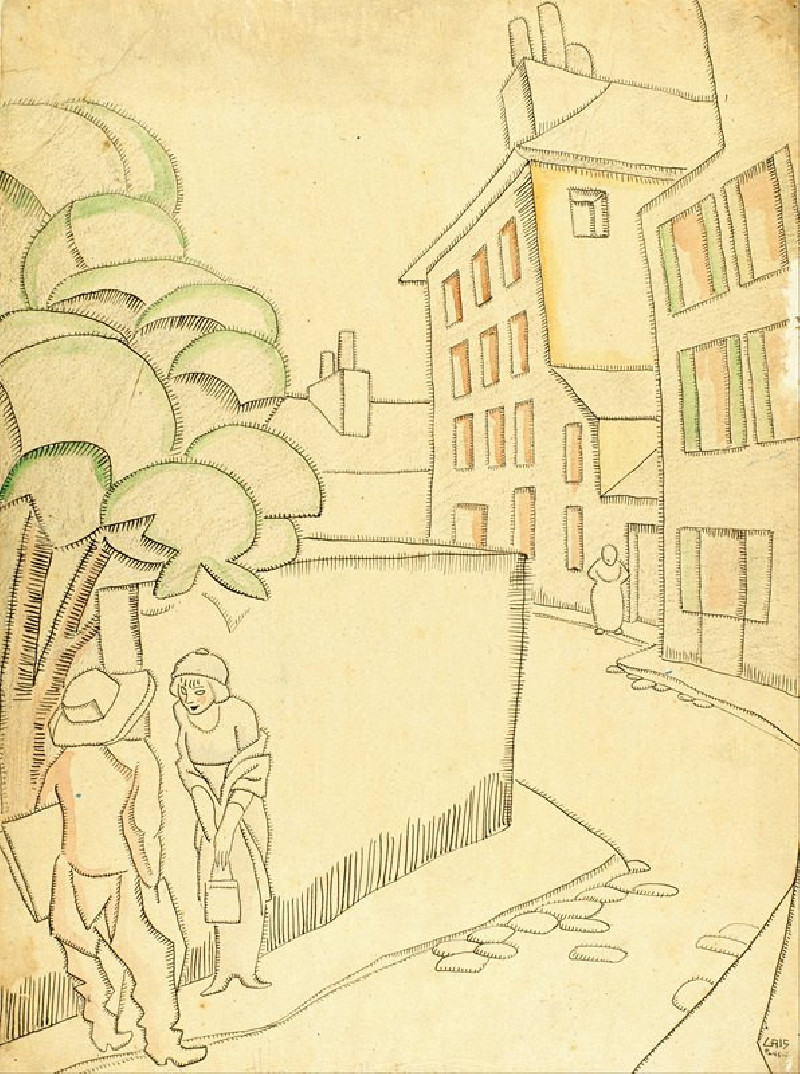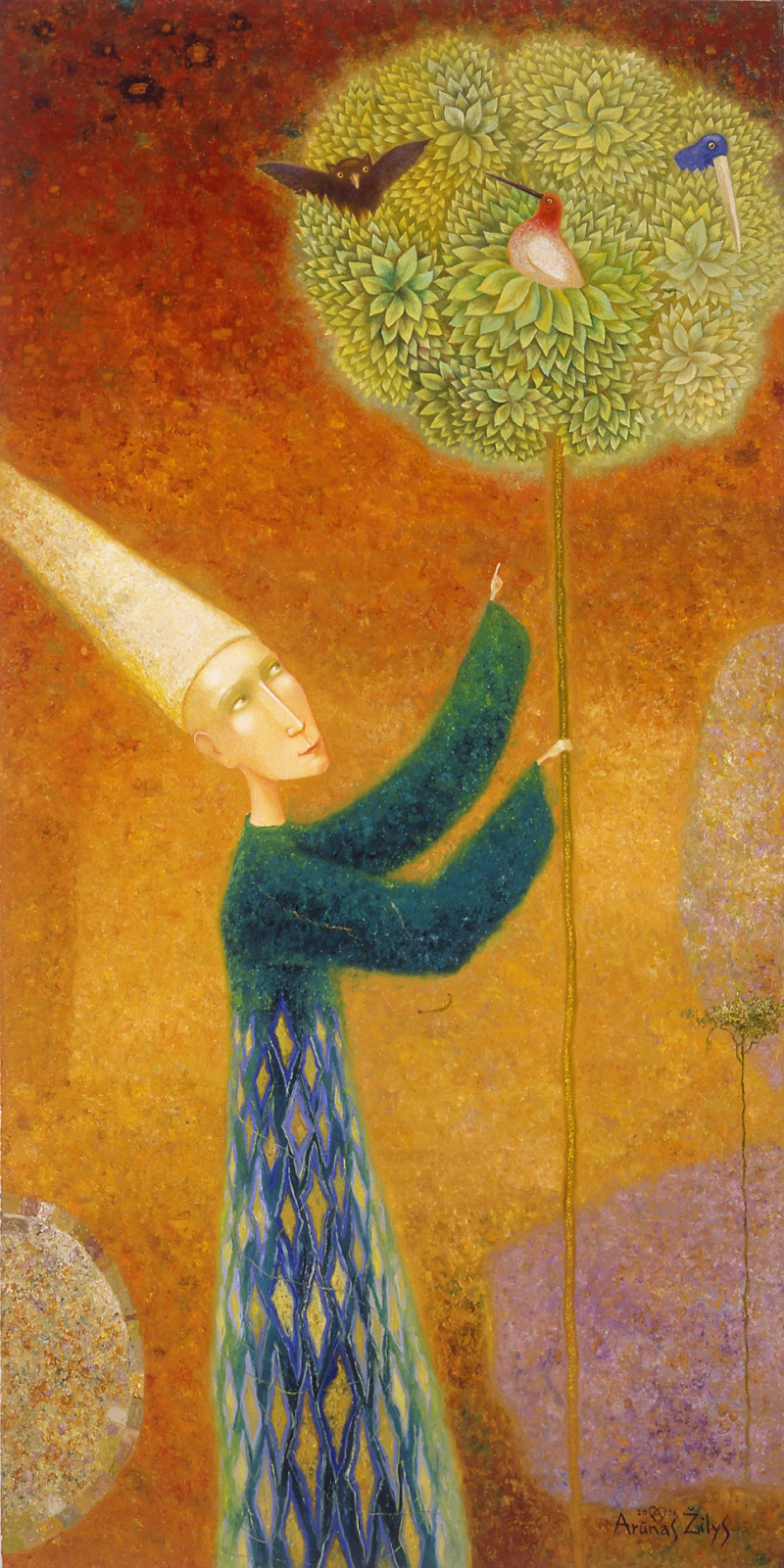Rising moon in Barbizon (19th century)
Technique: Giclée quality print
Recommended by our customers
More about this artwork
"Rising Moon in Barbizon" by Charles François Daubigny is a captivating 19th-century painting that offers a glimpse into the tranquil natural scenery that inspired so much of the Barbizon school. In this atmospheric work, Daubigny utilizes subdued earth tones to depict a dense, shadowy forest under the emerging light of a full moon. The moon, painted in soft yellow, gently illuminates the darkened woods and the mottled landscape below, revealing hidden depths and textures with its subtle glow.Daubigny's masterful rendering of light and shadow speaks to the mood of serenity and the profound connection between nature and the nocturnal sky. With its thick brushstrokes and the expressive interplay between darkness and light, the artist not only captures a moment of nighttime stillness but also conveys the profound and reflective quality of the landscape.This painting is a beautiful example of how Daubigny’s works contributed to the development of French landscape painting, paving the way towards Impressionism.
Delivery
Returns
Charles-François Daubigny (15 February 1817 – 19 February 1878) was a French painter, one of the members of the Barbizon school, and is considered an important precursor of impressionism.
He was also a prolific printmaker, mostly in etching but also as one of the main artists to use the cliché verre technique.

